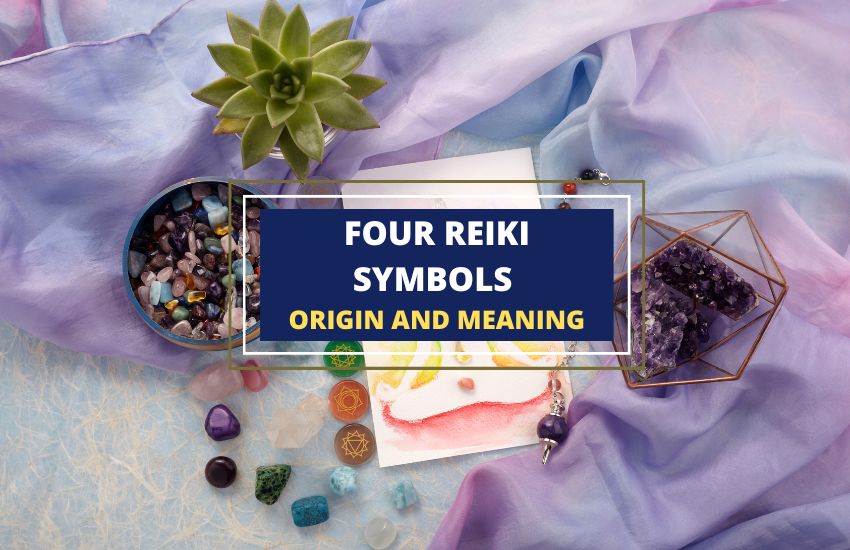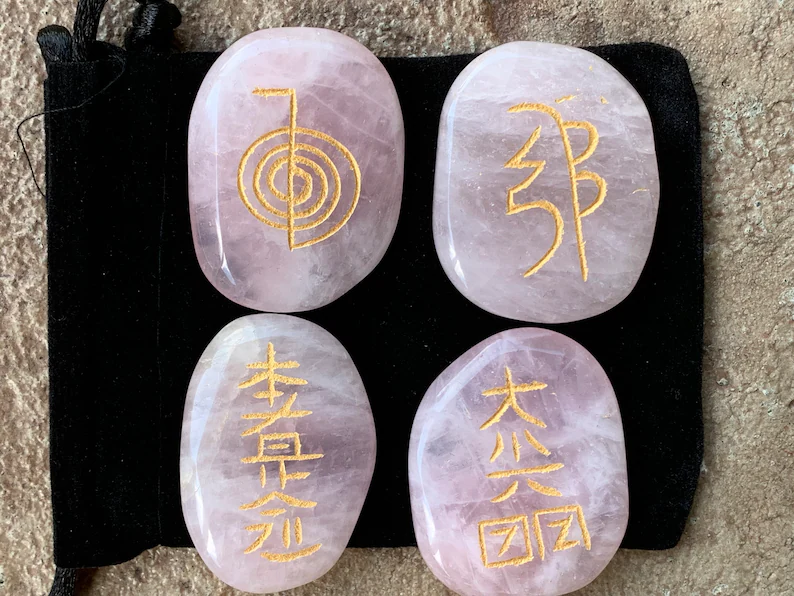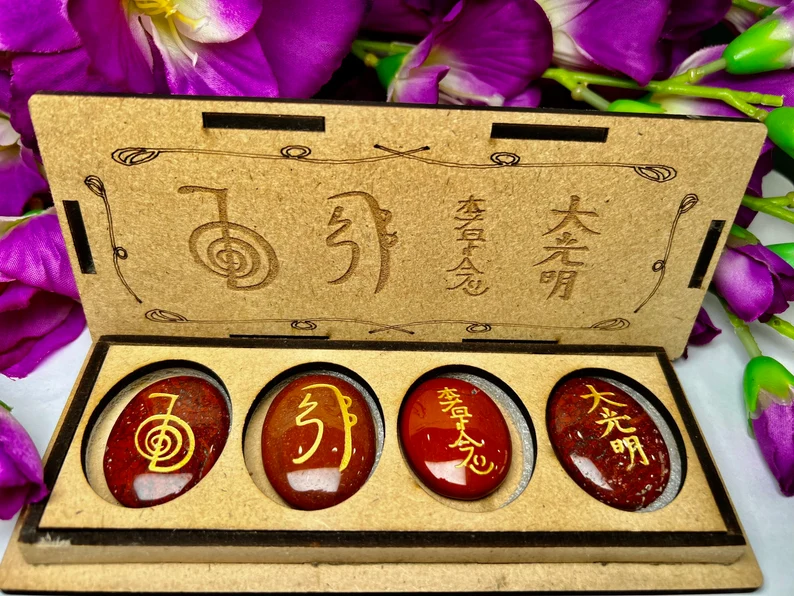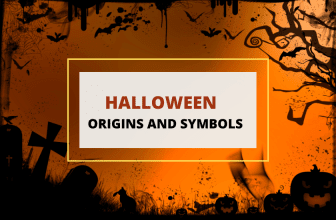
Table of Contents
Before Reiki became a global phenomenon, it was a healing practice established by Dr. Mikao Usui. Usui Reiki, the original Reiki form, emphasizes personal spiritual growth and self-treatment, along with five main principles for life and four symbols for healing. But over time, Reiki has changed, and today, there are numerous versions, symbols, and perspectives on Reiki healing. In this article, let’s take a look at Reiki in its original form, how it’s used, and whether it really works.
What is Reiki?
The word “Reiki” can be broken down into two parts: “Rei” means universal or spiritual, and “Ki” means life force energy.
Reiki is a holistic energy healing system where practitioners channel universal energy to heal physical, emotional, and spiritual ailments. It was founded by Dr. Mikao Usui in Japan in the early 20th century. Usui was a scholar and spiritual seeker. He pursued various forms of knowledge, including theology, psychology, and medicinal healing.
According to Usui, during his spiritual journey, he experienced a powerful mystical revelation on Mount Kurama. After fasting and meditating for 21 days, he said he was struck by a powerful light energy, which presented him with the symbols and knowledge that would form the basis of Reiki.
This profound experience not only gave Dr. Usui the ability to heal but also to attune others to this healing energy. After his enlightening experience on Mount Kurama, Dr. Usui began to practice and teach Reiki in Kyoto.
Symbols of Usui Reiki

Within this healing system, symbols play an essential role. They are keys that open doors to higher levels of awareness or consciousness. The total number of Reiki symbols can vary depending on the system or tradition of Reiki being practiced.
Traditionally, there are four main symbols.
- Cho Ku Rei – The Power Symbol: This symbol roughly translates to “Place the power of the universe here.” It’s used to increase power, amplify healing energy, and offer protection. This symbol is also used to cleanse negative energy.
- Sei Hei Ki – Emotional or Mental Symbol: Translating to “God and man become one,” this symbol aids in emotional and mental healing. It is especially used for emotional and mental healing, purification, protection, and clearing emotional blockages.
- Hon Sha Ze Sho Nen – Distance Healing Symbol: This can be translated as “No past, no present, no future” or “The Buddha in me reaches out to the Buddha in you to promote enlightenment and peace.” It’s used in distant healing to send Reiki energy across time and space.
- Dai Ko Myo – Master Symbol: Translating to “Great shining light,” this symbol represents enlightenment and is the most powerful symbol in Reiki. It’s used primarily during attunements, signifying a direct connection to the universal energy.
Variations to Reiki Symbols

While these four are the main symbols, newer forms of Reiki have introduced various other symbols. For example, Karuna Reiki, developed by William Lee Rand and the International Center for Reiki Training, introduces eight more symbols.
Tibetan Reiki has its own set of symbols apart from the traditional Usui symbols. Rainbow Reiki, developed by Walter Lübeck, combines traditional Usui methods with specific techniques from other therapeutic practices, adding new symbols and focusing more on the body’s chakra system.
Some Reiki Masters have also introduced their own symbols based on their personal experiences and guidance.
However, others, like Jikiden Reiki, have tried to remain true to the original form. Jikiden” means “directly handed down” in Japanese. This system is a purist form that attempts to remain close to the original teachings of Dr. Usui and Dr. Hayashi, without the Western adaptations.
How Are Reiki These Symbols Used?
In the traditional Usui Reiki system, the Reiki symbols are introduced progressively as the student advances through the different levels or degrees of training. There are three levels that a student would typically pass through.
First Degree or Level 1 (Shoden):
In this beginner’s level, the primary focus is on opening the energy channels and familiarizing students with the feel and flow of Reiki energy.
At this stage, students typically do not learn any symbols but instead learn hands on healing techniques for personal healing and healing others.
Second Degree or Level 2 (Okuden):
In the second degree, students are introduced to the first three symbols: Cho Ku Rei, Sei Hei Ki, and Hon Sha Ze Sho Nen.
They learn how to draw, activate, and use these symbols to enhance their healing sessions. This level also teaches students how to send distant healing, which utilizes the Hon Sha Ze Sho Nen symbol.
Third Degree or Level 3/Master Level (Shinpiden or Master/Teacher Level):
The Dai Ko Myo, or the Master Symbol, is introduced at this level. This degree focuses on deepening one’s connection to the universal energy, understanding the spiritual essence of Reiki, and mastering the use of all the symbols.
Students also learn techniques to attune others to Reiki, empowering them to teach and initiate others into the practice.
Five Spiritual Principles of Reiki

Traditional Reiki emphasizes moral teachings alongside the healing practices of Reiki. These are often referred to as the Five Reiki Principles or the Five Spiritual Principles:
- Just for today, I will not be angry.
- Just for today, I will not worry.
- Just for today, I will be grateful.
- Just for today, I will do my work honestly.
- Just for today, I will be kind to every living thing.
While these might appear simple or intuitive, they’re foundational to Reiki and provides guidance in living a fulfilling and balanced life.
These Five Reiki Principles serve as a bridge between the healing practice of Reiki and the broader goal of personal and societal well-being and harmony. They remind us that as individuals, we have a responsibility to our fellow humans. These principles show the deeper purpose behind Reiki and provide a roadmap for a life of balance, compassion, and mindfulness.
Does Reiki Really Work?
Reiki and its symbols have played a pivotal role in alternative and holistic healing communities worldwide. With more individuals seeking non-traditional healing methods, Reiki has grown in popularity, with numerous practitioners and courses available globally.
But does Reiki healing really work?
Like many alternative therapies, there isn’t much scientific validity to Reiki healing. Critics argue that there isn’t enough empirical evidence to prove Reiki’s effectiveness beyond the placebo effect.
However, some studies claim that Reiki does provide many benefits, has the potential to be used as a complementary therapy for healing mind and body, and may be effective for pain and anxiety. This study is titled “Reiki Is Better Than Placebo and Has Broad Potential as a Complementary Health Therapy” and unapologetically outlines the benefits of Reiki.
Another study published in 2014 concluded that, “While the number of studies is limited, based on the size Cohen’s d statistics calculated in this review, there is evidence to suggest that Reiki therapy may be effective for pain and anxiety.”
Despite skepticism, Reiki has made its way into some hospitals
and medical settings as a complementary therapy. Those who have undergone Reiki treatments report feeling relaxed, at peace, or even rejuvenated after sessions.
Reiki as a Spiritual Practice

Because Reiki also carries spiritual significance for many practitioners and clients, its benefits aren’t just physiological or psychological but also spiritual. Some view it as a form of spiritual healing or connection, regardless of its physical outcomes. In this sense, it has several mental benefits, much like meditation.
It helps the practitioner to remain mindful and present and can enhance personal growth and evolution. It can give a person a sense of purpose, reduce stress, and enhance emotional balance. While Reiki can offer tangible physical and emotional healing benefits, its true depth lies in its potential for spiritual growth and evolution.
Wrapping Up
Reiki symbols remain a profound aspect of the Reiki healing system. As with any ancient tradition brought into the modern age, Reiki faces challenges, but its core principles of healing and universal energy remain unchanged.
Whether embraced wholeheartedly or viewed with skepticism, the legacy of Reiki symbols is a testament to the enduring quest for healing and spiritual growth.
Related articles
Deep Meaning and Symbolism of the Sri Yantra
Lakota Symbol – Origins, Meaning and Relevance
Sankofa – What Does This Adinkra Symbol Mean?
What Is the Prayer Wheel and What Does It Symbolize?








